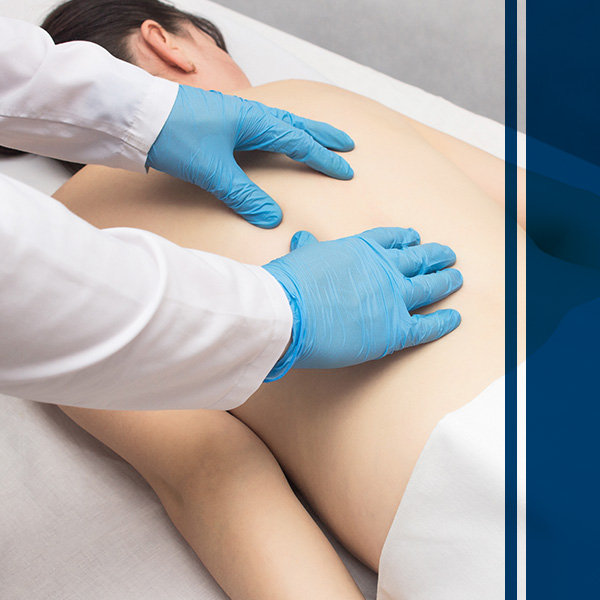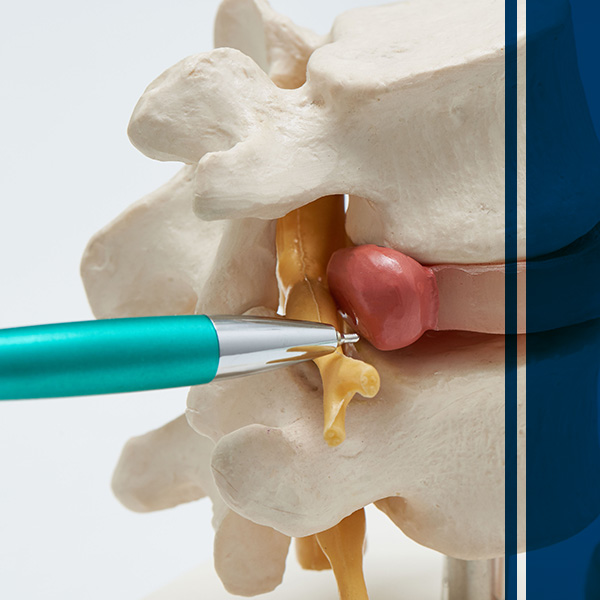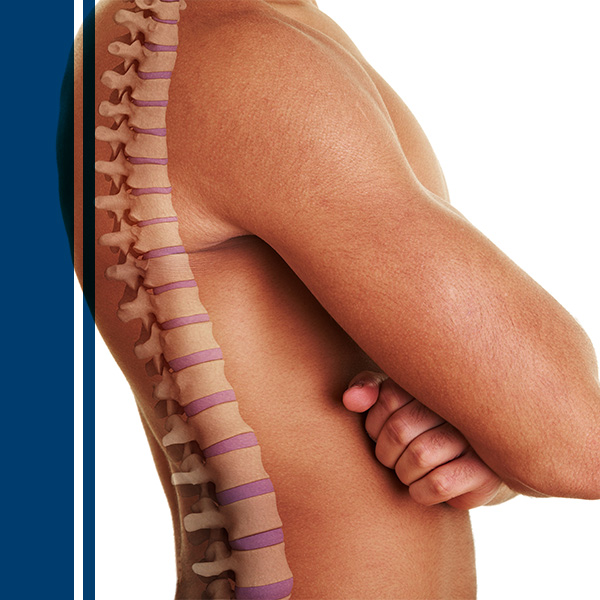RANDALL F. DRYER, M.D.
TOP RATED U.S. SPINE SURGEON
Discograms
Frequently Asked Questions
What is a discogram?
A discogram is a procedure in by which a small needle is placed into the interior of the disc to check the structural integrity of the disc and to see if the disc is causing pain. More discogram informational animations can be found on our Orthopedic Surgery Animations page.
Who Is a Good Candidate for Discograms?
A good candidate for a discogram procedure is typically someone who is experiencing persistent and severe back or neck pain that has not responded to conservative treatments. This individual may have a history of spinal issues or injuries and has undergone previous imaging studies such as MRI or CT scans that have not provided a conclusive diagnosis. By undergoing a discogram, patients can benefit from a more accurate and targeted approach to diagnosing the specific cause of their pain, particularly if it is originating from the intervertebral discs in the spine.


Benefits of Discogram
The benefits of discogram are manifold. One of the primary advantages is the ability to precisely identify which disc or discs are causing the pain. This information is invaluable in developing a customized treatment plan that directly addresses the underlying issue, leading to better outcomes and improved pain management. Additionally, a discogram can help healthcare providers determine whether a patient is a suitable candidate for surgical intervention, thereby avoiding unnecessary procedures and ensuring more successful outcomes for those who do undergo spine surgery.
Why Choose Us
When considering where to undergo a discogram procedure, choosing Central Texas Spine Institute in Austin can provide patients with a high level of expertise and personalized care. Our team of spine specialists is dedicated to utilizing state-of-the-art technology and techniques to deliver accurate diagnostics and effective treatment solutions. By selecting our practice for your discogram needs, you can trust that you are in the hands of skilled professionals who prioritize patient comfort, safety, and well-being throughout every step of the process.
Where will my procedure take place?
The procedure is performed in a special x-ray room called a fluoroscopy room and will take place in the hospital.
What is involved in a discogram procedure?
The patient lies on his/her left side. The needle is inserted to the right of the midline through the muscle in the back, so as to avoid the spinal cord and its contents. The procedure is done with the patient awake, although an IV will be started and medication will be given through the IV to control any discomfort that may occur.
You should not eat or drink for 6 hours prior to the procedure.
Discogram Part One:
The procedure, itself generally consists of two parts. Part one is the injection of water into the disc. Doing this to a normal, healthy disk is completely painless, as it is water tight. If the disc is abnormal, the water injection may cause discomfort. You will be instructed to tell the physician the location and severity of the pain that ensues and whether or not it is the typical pain that you have been experiencing.


Discogram Part Two
The second part of the procedure consists of injecting dye into the disc. The dye shows up on the x-ray screen. A healthy disc has a normal, predictable dye pattern. If the disc is abnormal, the dye will proceed to flow in an abnormal manner which can be seen on the x-ray screen.
Generally, standard x-rays are taken after insertion of the dye to make a permanent record of the findings seen on the x-ray screen. After all x-rays have been completed, the needles will be removed. Occasionally, a CT scan may be done after the needles are removed. You will be able to return to the outpatient area and go home at that time, as long as you have someone to drive you.
What are the risks involved in a discogram?
There are some risks involved with the procedure that you need to realize before making the decision to have a discogram.
Nerve Injury
There is always a chance of injuring a nerve by sticking a needle into the area of the spinal nerves. Another advantage of doing the procedure with you awake is that, if a nerve is irritated by the needle, you will note pain going into your leg and you should instruct the physician at that time so that he may change the direction of the needle. This is an infrequent problem.
Infection
Other risks related to the procedure are the possibility of the disc being infected simply by sticking a needle into it. We take great precautions to prevent that, including surgical preparation of the patient’s skin. Additionally, and the surgeon who performs the procedure scrubs his hands and wears the same surgical garb as if he were doing an operation.
Allergic Reactions
Other potential risks include the allergic reaction to one of the medications given, either for the pain or the diagnostic part of the procedure. You should let your physician know of any known drug allergies.
What is the recovery time for a discogram?
There may be some increased discomfort after the procedure, so do not plan on doing anything strenuous for at least 24 hours after it is completed. Usually, the physician will tell you to make an appointment to return to the office several days after the procedure to discuss the results.
Because of the medications given, the patient should be accompanied to the procedure by someone who can drive them home following the discogram.
What charges can I expect from this procedure?
There will be three charges for your discogram: the physician’s charge for his services, the hospital charge for use of the special x-ray (fluoroscope) and a charge by the hospital for the use of the facility.
If you have any questions or concerns, please feel free to contact our office.

SCHEDULE TODAY
At Central Texas Spine Institute, we are committed to helping individuals find relief from spinal discomfort and regain their quality of life through advanced diagnostic procedures like discograms. Our focus on individualized care and comprehensive treatment planning sets us apart as a trusted destination for spinal healthcare in the Austin area. Contact us to schedule an appointment today.

A discogram is a procedure in by which a small needle is placed into the interior of the disc to check the structural integrity of the disc and to see if the disc is causing pain. More discogram informational animations can be found on our Orthopedic Surgery Animations page.



